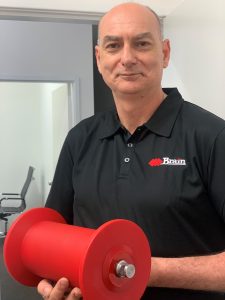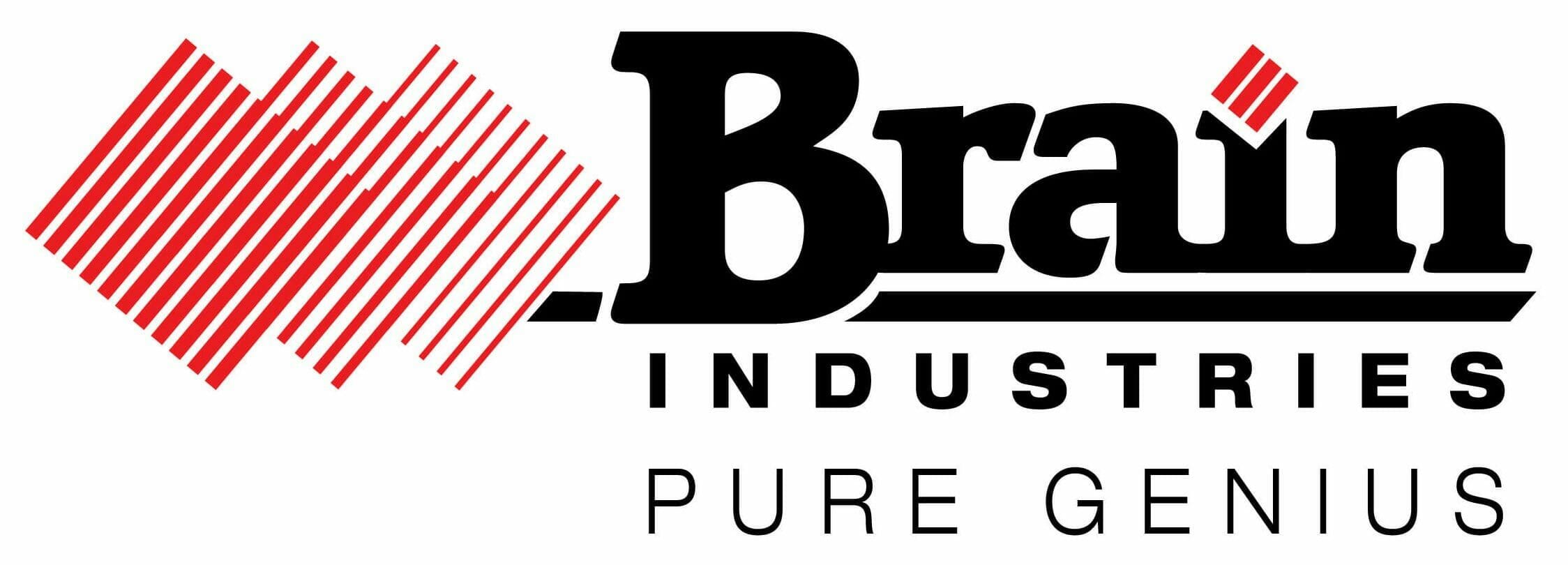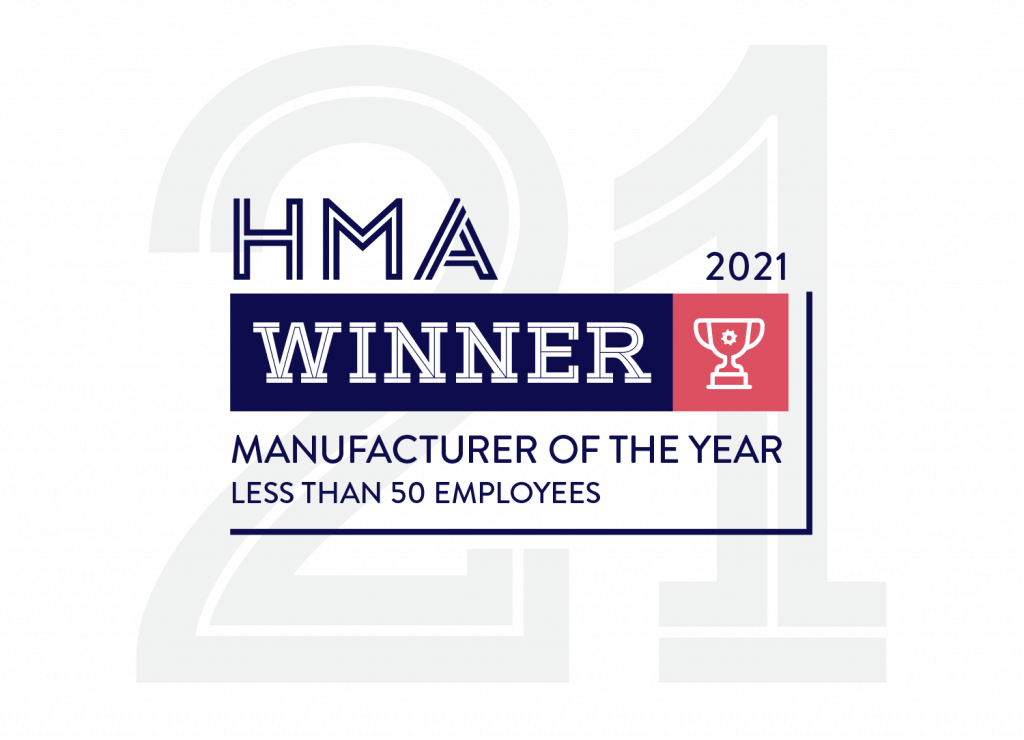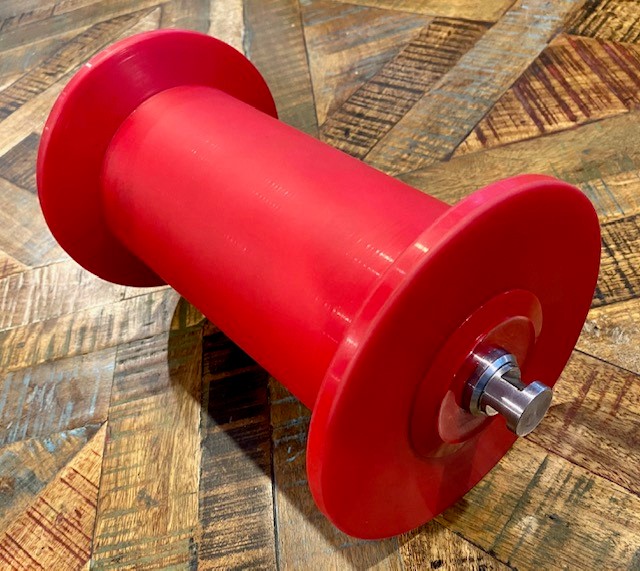Brain Industries’ new fire resistant and anti-static (FRAS) polyurethane drift rope rollers better protect the main haulage wire ropes on the drift in underground mines and on draglines that use rope haulage pulleys.
How do drift rope rollers work?
Rollers are an essential part of drift haulage – a system of winding in a shaft or tunnel. The drift haulage has a slope inclined to the horizontal which travels on rail tracks in a shaft.
The wire haulage rope must be supported by rollers. Their job is only to support the rope mass, not to take any rope tension from the end of rope mass. Any horizontal curves need horizontal and vertical rollers to control and protect the rope.
The rollers guide and suspend the rope centrally down the mine drift. At the same time, they protect the wire haulage rope from abrasion, vibration and friction related damage.
Regulatory requirements and guide to using rope rollers in drifts
Rollers are usually mounted in the drift every four to seven metres, depending on the rope mass and speed. The distance between rollers must prevent the natural frequency of oscillation to cause vibration and resonance to the rope. Staggering the rollers helps to achieve this.
The rollers support the rope from the drum to the headsheave. They will vary in width from the widest roller near the drum, to the narrowest roller near the headsheave. The distance from the drum to the headsheave will generally be about 40 metres.
Varying the centre-to-centre distance of the rollers helps to avoid exceeding a fleet angle of 1.5 degrees. The spacing of rollers is also important to ensure the angle of bending over the sheave by the rope is less than 4 degrees.
Rollers need to be at least 10 millimetres below the straight line from headsheave to drum.
If the drift has turnouts, a mine must use wooden sleepers or rope rollers or both to protect the rope from abrasive wear as the rope crosses the rails and so it doesn’t touch the rib. Mine regulators also require the rope working environment prevents the ropes from rubbing on anything abrasive or that may contaminate it including stone, coal, steel and concrete.
Read more in the NSW Resources Regulator Technical Guide on Powered Winding Systems.
The benefits of polyurethane
The NSW Resources Regulator’s technical guide says that rollers should have “an outer polyurethane sleeve that protects the rope”.
Polyurethane coated rollers last longer and offer better abrasion resistance.
The polyurethane coating is light weight but strong for improved load bearing capacity. It is durable and doesn’t rust. Polyurethane protects machinery and components from heat, water, oxygen, oil and grease, chemicals, fire and flames, and mould to reduce risk and create a safer workplace.
FRAS polyurethane is essential to meet regulatory and safety standards in underground mines.

Australian made for quality and fast delivery
Our drift rope rollers are designed and manufactured in Australia using quality materials, including sealed bearings. Many competitor products extensively use imported components.
For Australian customers, local production means faster turn-around, so you have the rollers sooner. You will also be supporting Australian industry and jobs.
We machine our rollers concentric to the shaft as an added measure to eliminate haulage wire rope vibration. We custom build the labyrinth and dust seals stop dust and contaminants getting into the bearings.
Brain only use high performance prepolymers and we make our own moulds. We have our own polyurethane ovens, and our on-site degassing equipment ensures the product is not porous.
More information on polyurethane drift rope rollers
Customers typically purchase between 25 and 50 rollers to ensure onsite supply to minimise downtime and reduce transport costs. We purpose build each roller to meet each mine’s specifications.
To discuss your drift rope roller needs or other polyurethane products or custom applications for your business call us today on +61 2 4969 2111. We’re ready to help.



